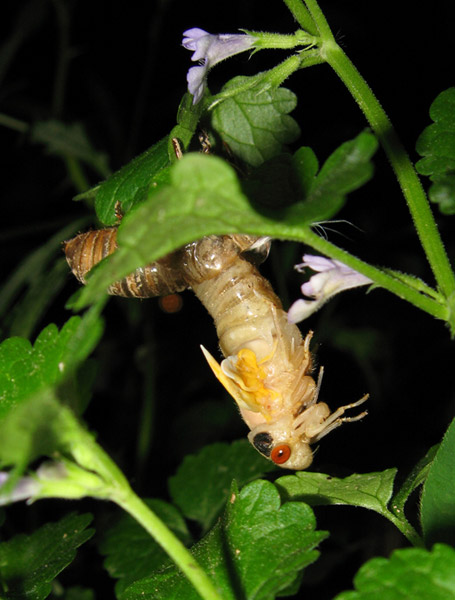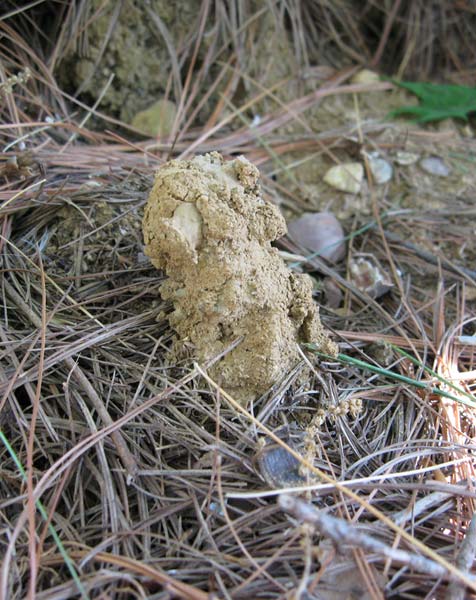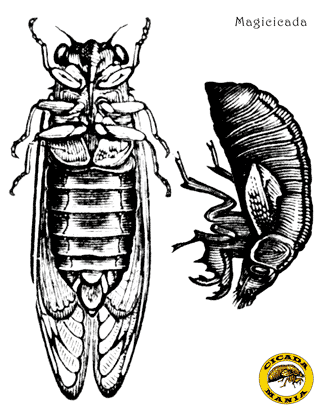In the coming days I’ll get a lot of emails from people telling me that they’ve found albino cicadas — well, they aren’t albinos, they just haven’t turned black yet. Once a cicada splits its nymph skin and imagines into the adult form, it takes some time for it to turn the familiar black color. Now, if you find a cicada with blue eyes, that’s different, that’s unusual (about 1 in 1000), so we want to hear about that.
This picture was take by Roy Troutman, last night in Batavia Ohio. It’s important to note that this is a Brood XIV straggler and not a Brood XIII cicada.


